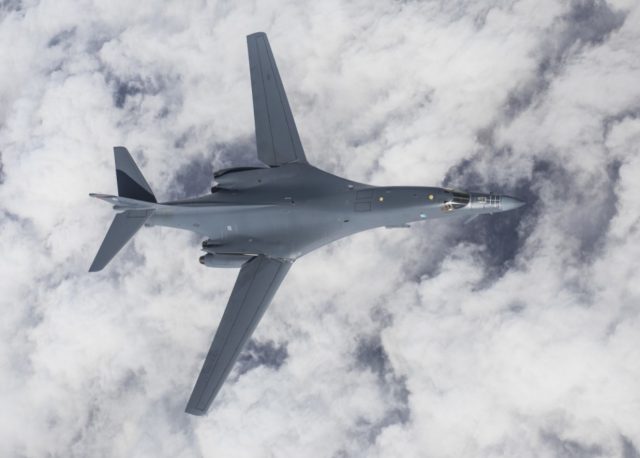The US Air Force Global Strike Command has proposed the retirement of 17 B-1B Lancer heavy bomber in order to focus funds and manpower on the healthiest airframes in the fleet.
The command argued that continuous bomber support operations over the last 20 years have taken a toll on the airframe’s structure due to overuse in a manner not commensurate with its planned design.
“Currently a portion of the B-1Bs are in a state that will require tens of millions of dollars per aircraft to get back to a status quo fleet in the short term until the B-21 Raider comes online,” the command said.
As such, Air Force officials proposed the retirement of 17 structurally deficient B-1Bs in 2021 so that maintenance dollars and manpower can be focused on the healthiest aircraft in the fleet.
What is more, the Air Force has changed various flight employment tactics of the remaining B-1Bs to preserve the longevity of the aircraft. These changes are expected to significantly extend the life of the B-1B and reduce costs associated with potential structural repairs during the transition to the B-21.
The Air Force said it does not plan to close any B-1B squadrons, reduce major manpower pools or close any bomber bases. The reduction of B-1s from Ellsworth and Dyess Air Force Bases will be spread across both units.
In addition, the Air Force will maintain adequate B-1B capability through a heavy B-52 test period and initial B-21 buildup.
“This is the start of the B-1B retirement which has been planned for some time, but sped up on the most deficient aircraft in the fleet,” the release said.
Air Force programs in the FY 2021 budget proposal
The Ground Based Strategic Deterrent program will ramp-up funding to execute the first full fiscal year of the engineering and manufacturing development contract and advance major activities, including systems engineering, information technology, data management and analytical capabilities.
The B-52 is executing a comprehensive modernization, to include increased weapons capacity, upgrades to communication systems, and replacement of engines and radar system; funding will be allocated to integrate Advanced Extremely High Frequency capability, which provides survivable, high bandwidth, and secure two-way command and control communications. Radar modernization and engine replacement are the two largest programs.
The propsal fully funds the Long Range Stand Off weapon developmental program. LRSO is currently on track and has the same five-year profile as it did in last year’s budget. The funding profile for the B-61 remains the same as last year.



























